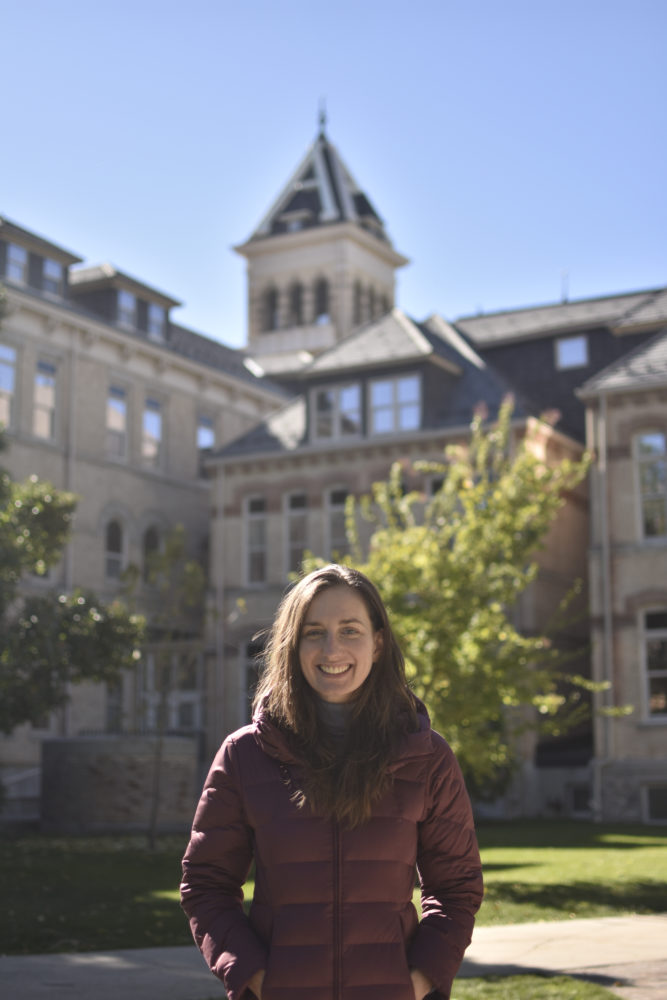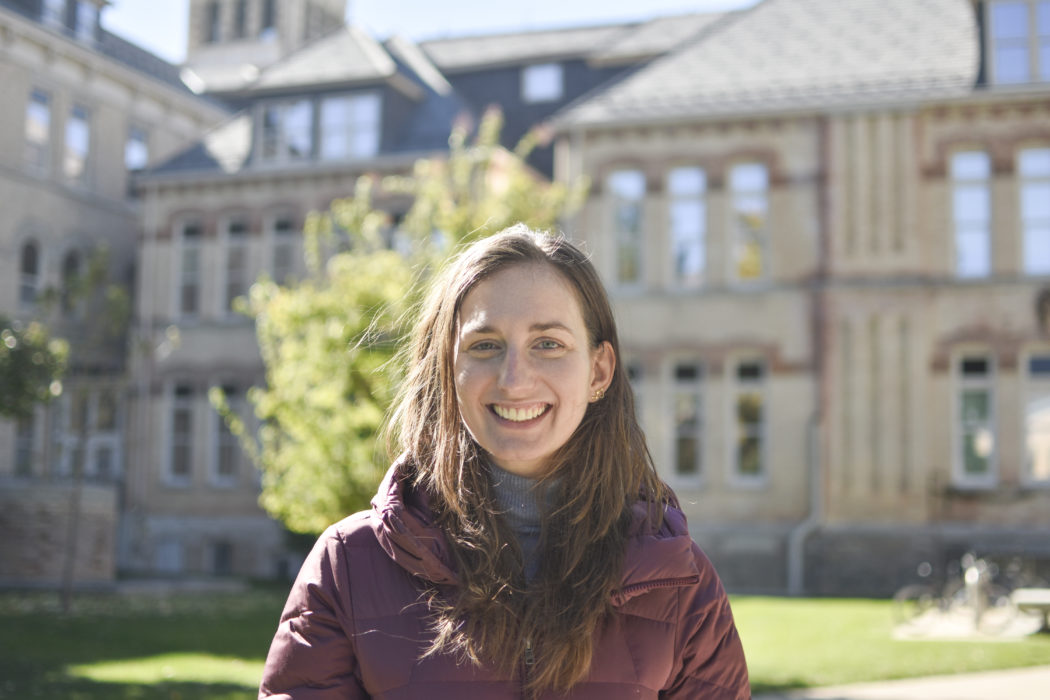Dedicated to studying those who came before: Dr. Anna Cohen
Dr. Anna Cohen, a professor of archaeology and anthropology at Utah State University, was born in Singapore, grew up around the world, worked in Alabama, Mexico and Honduras, was in a documentary, worked with National Geographic and camped in a jungle.
These are just a few of the life experiences she has had. When she’s not digging up ancient civilizations, Cohen teaches several archaeology and anthropology classes at USU.
Cohen’s parents worked for the U.S. Embassy in Indonesia when she was born. This then led her to grow up in Indonesia, Switzerland, United States and Canada.
“On the island, there was only two incubators, so my parents flew to singapore to have me. I took my first flight when I was a week old. My parents live in D.C. now, but I moved around a lot. When you are in the foreign service, it happens a lot,” Cohen said.
Cohen said she realized what she wanted to be when she grew up from a young age. She’s been working since then to make that goal happen.
“When I was nine, I was living in Switzerland. One of my books I had was about an archaeologist in Pompeii, so I decided that’s what I wanted to be. I wasn’t quite sure what it was at the time but I knew wanted to do it,” Cohen said.
From there, Cohen went on to attend several universities. After attending Mcgill University, she lived in India working for a non profit. During her time there, Cohen said she came to make one of her more pivotal life decisions.
After working in India for a while, Cohen was offered a fellowship to stay longer. She had to decide if she would continue working in India or pursue further education. She chose to apply for graduate school.
Cohen said it was a difficult decision for her.
“I sometimes regret that,” she said, “it would’ve set me up for a career in international development and foreign aid. Now I realize that it was a right decision for the time though.”
Once her education was completed, Cohen’s career took her to work in Alabama. She began doing archaeologist work at a sight known as Moundsville. At this site, huge mounds indicated that in the past there were thousands of people living there. Cohen said this site is important because there is a lot of digging to be done to understand what people were doing there.
Along with Moundsville, Cohen journeyed to Western Mexico to work with the Purepecha people. Then, Cohen began working on a project in Honduras.
Cohen, along with other colleagues were called in to look at data from a lidar scan that had been done over a section of the jungle. This scan is done from a plane and shoots lasers at the earth. It then recreates a bare earth model that can tell if there are structures hidden under years of jungle growth.
In 2015, Cohen was sent back with a group composed of media journalists, National Geographic, scientists and Honduran military to go on the ground and see what they could find.
“We were there for 10 days to document if we found anything. We had a lot of TV cameras with us, which was interesting. I’m not sure I could ever be a reality tv show star,” Cohen said.
Cohen went on to tell how the first items were discovered. The group was trekking through the jungle when one of the camera men saw a stone carving poking out of the ground.
Cohen said, “Everyone started freaking out.” They discovered 52 different stone vessels at the site. They worked to document them, and received funding from National Geographic the next year to return and excavate them.
Working in the jungle, there are surprises around every corner. Cohen had a few tales about the wildlife she encountered in the jungle. One day while she was excavating, she had what she described as a “very hairy” tarantula pop up out of the ground.
One of her other wildlife encounters didn’t come from the ground, but from above.
“My colleagues and I were excavating, when all of the sudden there two monkeys over us making a lot of noise. Then we noticed some blood started dripping down,” Cohen said. “We realized the monkey had just given birth. It was swinging its baby back and forth. We had no idea what was going on, but a literally monkey gave birth right over us.”
Of all the artifacts Cohen has helped discovered, the most important to her isn’t an artifact at all. For her, it’s the knowledge that there were many people who came before her.
“It is the idea that there were people living and adapting to these really harsh environments. These people were adapting and living there before Spanish and Europeans arrived,” Cohen said. “They were thriving, and there were just so many people. Then, at least 90 percent were killed by the issues of colonialism. There is still so much to learn about them.”
Finally after all her time in Mexico, Honduras and other places, Dr.Cohen found her way to USU. Now, Cohen participates in research and long term teaching here at the university. Some of her classes include Archaeology of Latin America, World Archaeology and Biological Anthropology.
Students that have taken classes with Cohen said she has inspired them.
Christie Whipple, a global communications major, took the Archaeology of Latin America class.
“She’s really good at teaching, especially in a small group. She really connected with her class. I respect her as a professor,” Whipple said.
Cohen also enjoys the scenery of Cache Valley. She likes being near the mountains. She also is grateful for the opportunities that this school has given her and other students.
“I like that there are many opportunities for undergrad research here. I went to a lot of big schools and felt I got lost during that process. At Utah State, there is a lot more help with that for students,” Cohen said.
 Jason Rimando | The Utah Statesman
Jason Rimando | The Utah Statesman Dr. Anna Cohen, research assistant professor at Utah State University for the Department of Sociology, Social Work, and Anthropology. She has been here at USU since 2016 after graduating with her PhD at the University of Washington.
Bethany Budge, a history and anthropology major, is a research assistant with Cohen on a project at Utah State University. She said she enjoys the help Cohen has given her.
“I like how she works with students to figure out the different puzzles that we are going through. She is willing to work together to see the various points of view to find a solution,” Budge said.
Cohen’s life has taken her many places over the years. She said her tough, open-minded, and complicated personality has led her to achieve many different things. She’s learned to pick up some words in many different languages.
“I speak Spanish and French. I can’t say I really speak others, I’ve taken Portuguese, Hindi, a little German, my first language was Indonesian, and I’ve learnt a little Hebrew. I’m not conversational in any of those by any means though,” Cohen said.
One activity that Cohen has always liked to do is travel. She said she liked to travel just for fun and visit museums, restaurants and food trucks as well. It hasn’t always been easy, but it’s been worth it for her.
“The biggest success would be able to travel and sustain myself. It’s not easy at all. I haven’t had a lot of funds or money at certain parts, but being able to figure out strategies to get there is something that has been a success for me,” Cohen said.
—shelby.black@aggiemail.usu.edu
@shelbsterblack

